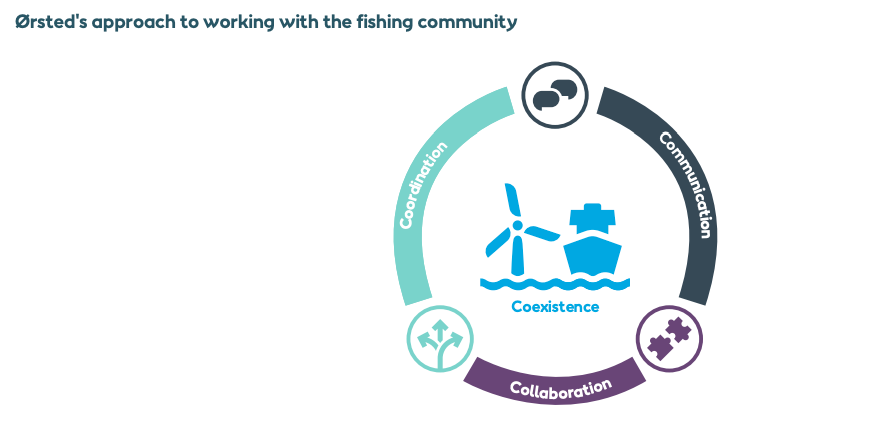Ørsted's Fisheries Communication and Outreach Plan
Ørsted U.S. Offshore Wind

Download Ørsted's Fisheries Communication and Outreach Plan
Executive Summary
Ørsted U.S. Offshore Wind is committed to maintaining a strong working relationship with all commercial and recreational fishermen who may be affected by a wind farm or wind farm activities in and around a lease area. We believe that good communication is essential to creating understanding between those who provide food for our tables and those who provide electricity for our homes. While not all conflicts can be resolved through communication alone, open and honest interaction helps to manage conflicts when they arise and identify ways to avoid or mitigate impacts that may occur.
This Fisheries Communication and Outreach Plan (“plan”) outlines key strategies that Ørsted U.S. Offshore Wind will use to communicate with fishermen and fishing industry representatives associated with all our projects. The goals of this effort are to effectively communicate, collaborate, coordinate, and achieve coexistence.
Ørsted U.S. Offshore Wind aims to achieve this by:
- Keeping the fishing industry informed about Ørsted U.S. Offshore Wind activities that may affect fishing
- Collaborating with fishermen to find ways to minimize and mitigate potential impacts of offshore wind development on fishing and identify ways our two industries can work together
- Striving to resolve any conflicts with individual fishermen quickly and fairly
- Identifying the best ways to communicate with fishermen and have an “open door policy” to listen to fishermen’s concerns
This plan discusses the challenges of communicating with commercial and recreational fishermen about wind energy. The fishing industry is complex, there are multiple gear types, some of which can conflict with each other. Fishermen tend to have small, family-owned businesses, and they operate out of many ports. Therefore, there are few existing channels for disseminating information to large numbers of fishermen. Further complicating communication and outreach is the fact that there are multiple stages of wind farm development for individual projects, each with its own communication challenges and needs.
This plan builds on the ‘Final Report on Best Management Practices and Mitigation Measures’ (Best Management Practices) outlined by Bureau of Ocean Energy Management (BOEM) for communicating with the fishing industry and also provides specific steps and procedures for implementation. Ørsted U.S. Offshore Wind has used our experience from Block Island Wind Farm (BIWF), the first operational offshore wind farm in the U.S., to inform, learn from, and continuously improve our engagement with commercial and recreational fishermen. We will also draw on appropriate experiences and relationships gained from 25 operating offshore wind farms in Europe that Ørsted owns and operates.

